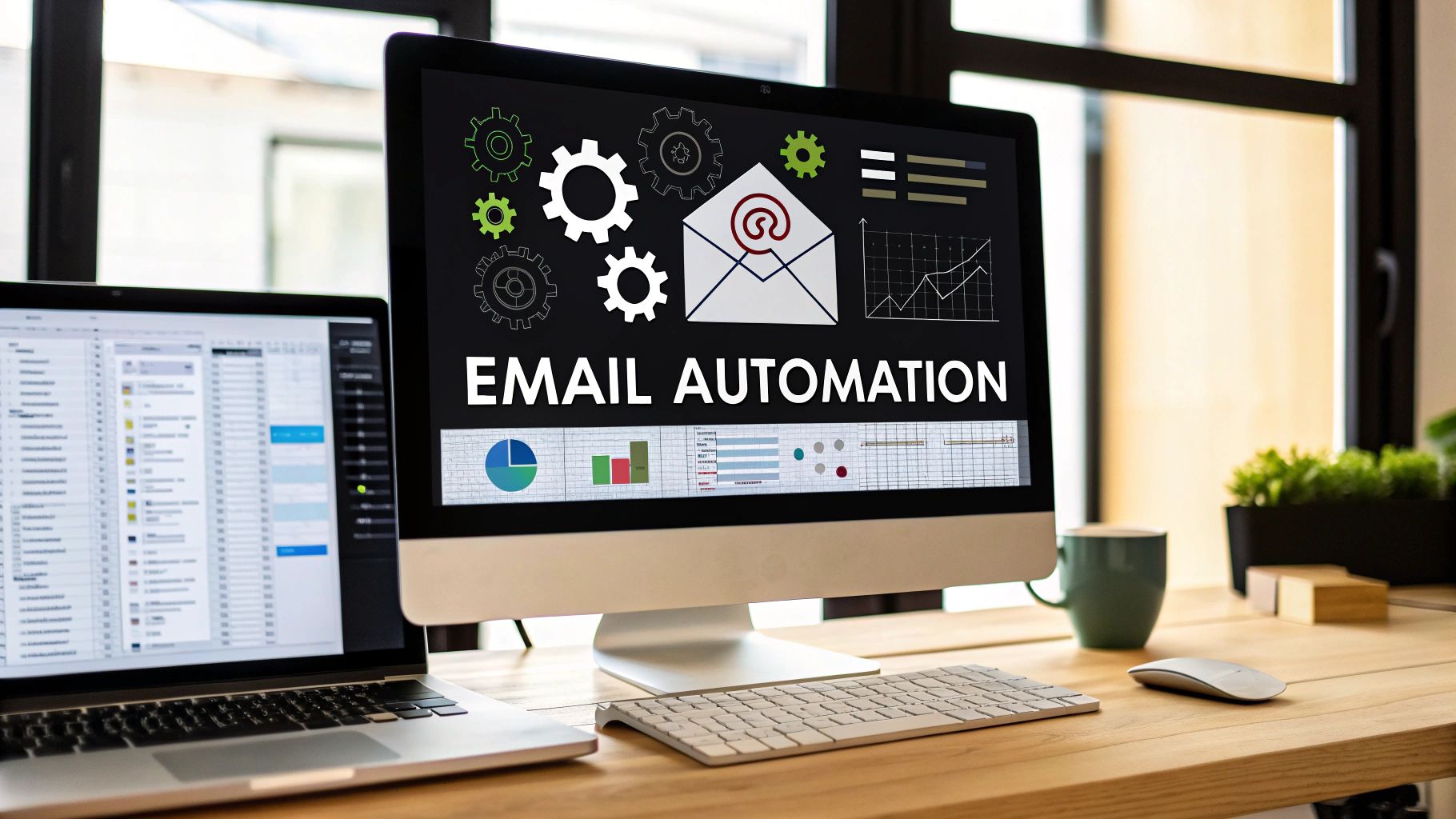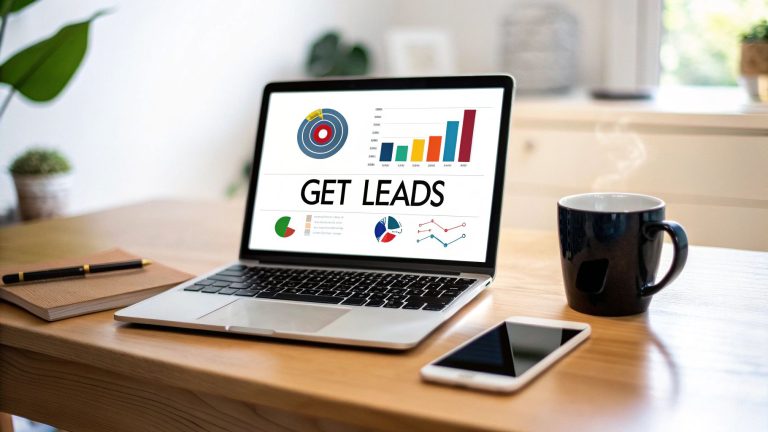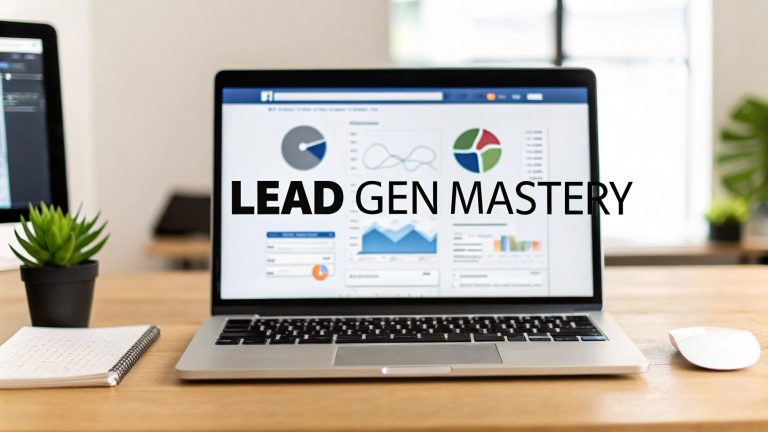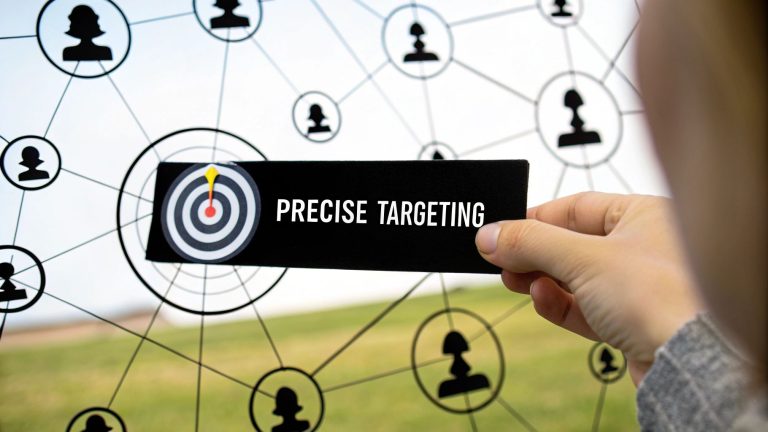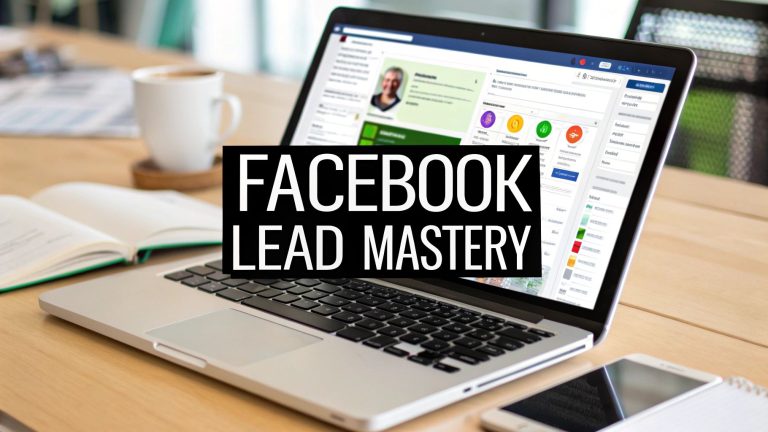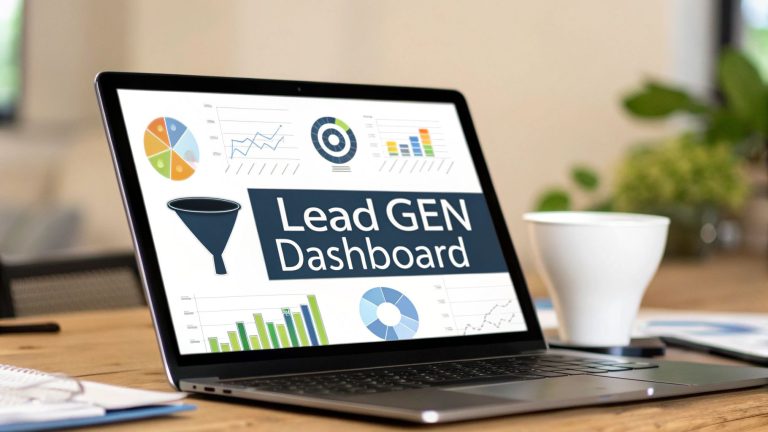9 Powerful Email Marketing Automation Strategies for 2025
Sending the same email to every subscriber is a recipe for low engagement and wasted effort. Modern consumers expect personalized, timely communication, a standard that’s nearly impossible to meet manually. This is where email marketing automation strategies come into play, transforming your email list from a static directory into a dynamic, responsive asset that drives revenue and builds lasting customer relationships.
By setting up automated workflows, you can deliver the right message to the right person at the exact right moment, all without lifting a finger after the initial setup. Imagine automatically welcoming new subscribers with a curated series of introductory emails, recovering potentially lost sales by reminding customers about their abandoned carts, or re-engaging inactive users with a compelling win-back offer. These aren't complex, enterprise-level tactics; they are accessible strategies that can significantly boost your ROI.
Before diving into the specific automation workflows, it's beneficial to have a strong grasp of the fundamental principles. A solid foundation in email marketing ensures your automated campaigns are built on proven best practices for deliverability, engagement, and conversion.
This guide moves beyond theory to provide a practical roadmap. We will break down nine powerful email marketing automation strategies you can implement today. For each one, you’ll find step-by-step instructions, real-world examples, and actionable tips for setting them up in platforms like LeadSavvy Pro. You will learn how to:
- Nurture new leads into loyal customers with targeted drip campaigns.
- Recover lost revenue through abandoned cart and re-engagement flows.
- Increase customer lifetime value with post-purchase and anniversary campaigns.
- Deliver instant value by automating lead magnet delivery and educational courses.
Get ready to stop sending generic blasts and start building intelligent, automated systems that work for your business 24/7. Let’s explore the strategies that will unlock your email marketing potential.
1. The Perfect First Impression: Welcome Email Series Automation
The moment a user subscribes to your list is your single greatest opportunity to make a lasting impact. A welcome email series is an automated sequence of messages sent to new subscribers immediately after they sign up. This isn't just a single "hello"; it's a strategic onboarding process designed to nurture the relationship from day one, setting the stage for future engagement and conversions.
This is one of the most fundamental yet powerful email marketing automation strategies because it capitalizes on peak interest. New subscribers are actively engaged and expecting to hear from you. Failing to connect immediately is a missed opportunity to build trust and guide them toward their next action.
How to Implement a Welcome Series
A successful welcome series does more than just confirm a subscription. It introduces your brand, delivers value, and encourages interaction.
- Email 1 (Sent Immediately): Deliver the promised lead magnet (e.g., ebook, discount code) and offer a warm, personalized welcome. Briefly reiterate your brand's core value proposition.
- Email 2 (Sent 1-2 Days Later): Share your brand's story or mission. Connect with the subscriber on a personal level by explaining the "why" behind your business.
- Email 3 (Sent 3-4 Days Later): Showcase social proof. This can include customer testimonials, case studies, or links to your most popular blog posts. The goal is to build credibility and demonstrate value.
- Email 4 (Sent 5-7 Days Later): Ask a question to encourage a reply, such as asking about their biggest challenge related to your industry. This simple act can dramatically improve your sender reputation and provide valuable customer insights.
Pro Tip: Use LeadSavvy Pro's automation builder to create your welcome sequence. You can set specific time delays between each email and use merge tags like
{{FirstName}}to personalize the greeting, making each new subscriber feel uniquely valued. This initial setup ensures a consistent, high-quality experience for every lead.
2. Abandoned Cart Recovery Automation
For e-commerce businesses, the abandoned cart represents one of the biggest sources of lost revenue. An abandoned cart recovery automation is a targeted email sequence automatically sent to customers who add items to their cart but leave without completing the purchase. This strategy is designed to bring high-intent buyers back to your store to finalize their transaction.
This is arguably one of the highest-converting email marketing automation strategies available because it targets users who have already shown significant purchase intent. They’ve browsed your products, chosen items, and started the checkout process. A timely, persuasive nudge is often all that’s needed to recover what would otherwise be a lost sale.
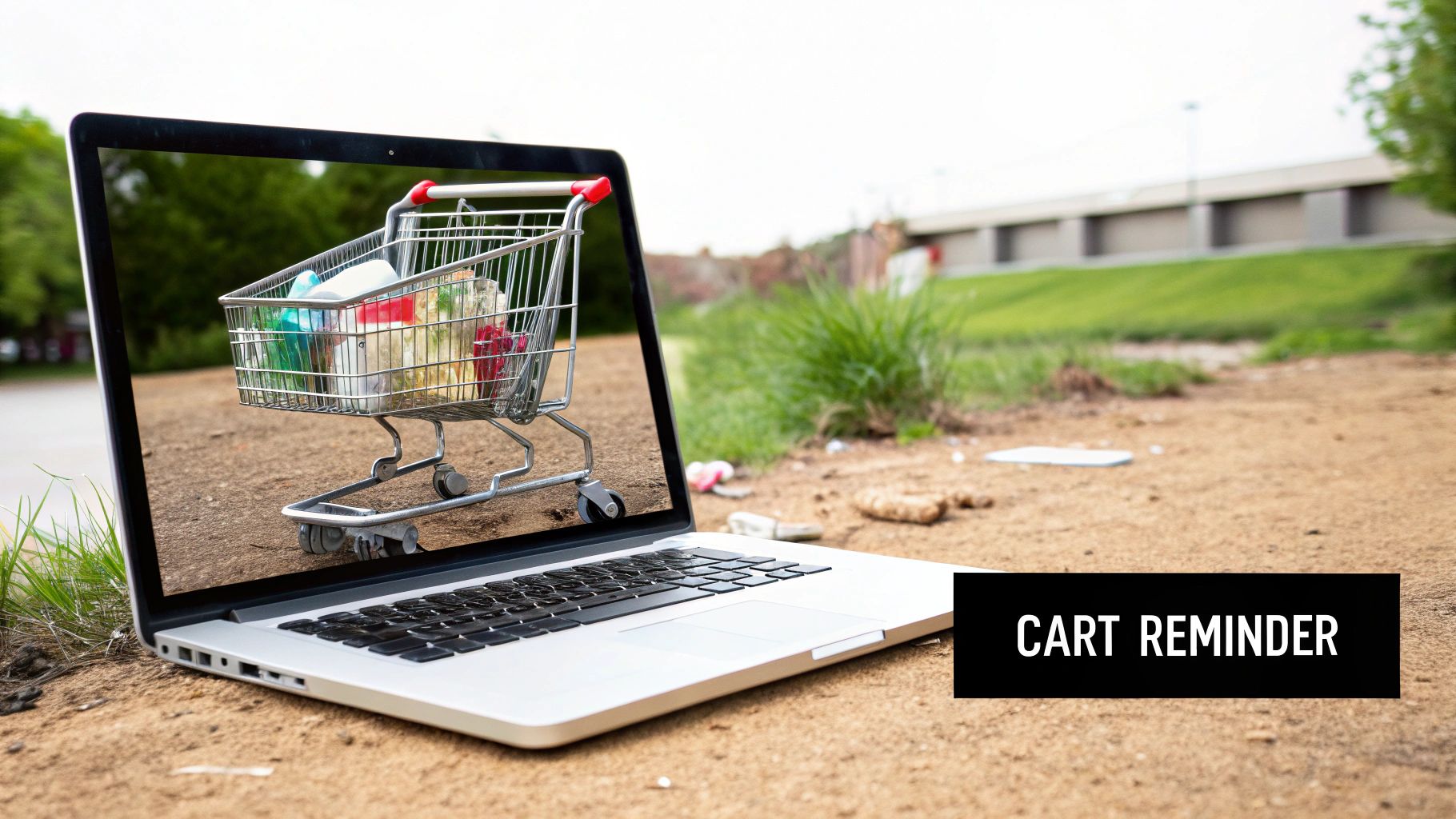
How to Implement Cart Recovery
A successful cart recovery sequence reminds, reassures, and incentivizes the customer without being overly aggressive. The timing and content of each email are critical.
- Email 1 (Sent 1-3 Hours Later): A gentle reminder. The goal here is to simply bring the items back to the customer's attention while their interest is still high. Use a simple subject line like "You left something behind" and include images of the items in their cart.
- Email 2 (Sent 24 Hours Later): Address potential objections. This email can include social proof like customer reviews for the abandoned products, trust badges, or answers to frequently asked questions about shipping and returns. This builds confidence and removes friction.
- Email 3 (Sent 2-3 Days Later): Introduce an incentive. If the customer still hasn't converted, a final email offering a small discount or free shipping can be the deciding factor. Create urgency by making the offer time-sensitive.
Pro Tip: Use LeadSavvy Pro's e-commerce integrations to trigger your abandoned cart workflow automatically. You can dynamically pull product images and names directly into your emails and set up rules to exclude customers who complete a purchase after the first email, ensuring a seamless and intelligent user experience.
3. Lead Nurturing Drip Campaigns
Once a new subscriber has been welcomed, the real work of building a relationship begins. Lead nurturing drip campaigns are strategic, automated email sequences designed to guide prospects through your sales funnel. Unlike a welcome series that focuses on initial onboarding, these campaigns deliver valuable, educational content over a longer period, warming up leads until they are ready to make a purchase.
This is a critical component of any successful email marketing automation strategy because not every lead is ready to buy immediately. Drip campaigns maintain top-of-mind awareness and build your authority by consistently providing solutions and insights, ensuring that when the time is right to buy, your brand is their first choice.
How to Implement a Lead Nurturing Campaign
A powerful nurture campaign aligns its content directly with the buyer's journey, addressing specific questions and pain points at each stage.
- Awareness Stage Content: Start by educating leads who are aware of a problem but not yet familiar with your solution. Send helpful blog posts, ebooks, or webinars that address their challenges without a hard sell. For example, HubSpot excels at this by sending educational content based on a user's industry.
- Consideration Stage Content: As leads become more engaged, introduce your solution. Share case studies, comparison guides, and ROI calculators that demonstrate your product’s value. This helps prospects evaluate their options and see how you stack up.
- Decision Stage Content: When a lead shows strong buying signals (like visiting your pricing page), it's time to prompt a decision. Send a targeted offer, an invitation for a demo, or a free trial. The goal is to make it easy for them to take the final step.
Pro Tip: In LeadSavvy Pro, you can use behavioral triggers to make your nurturing campaigns dynamic. For instance, if a contact clicks a link about a specific feature, automatically move them into a more targeted sequence about that topic. This hyper-personalization dramatically increases relevance and conversion rates. To master this process, learn more about our advanced guide to automated lead nurturing.
4. Reignite Lost Interest: Re-engagement (Win-back) Campaigns
Over time, even your most enthusiastic subscribers can become inactive. A re-engagement campaign, or win-back series, is an automated email sequence designed to reconnect with subscribers who have stopped opening emails, clicking links, or making purchases. Its goal is to reignite their interest before they are lost for good.
This is a critical email marketing automation strategy because it’s far more cost-effective to retain an existing subscriber than to acquire a new one. Inactive contacts can harm your sender reputation and skew your performance metrics, so addressing them proactively with a targeted campaign is essential for maintaining a healthy and profitable email list.
How to Implement a Win-back Campaign
A successful re-engagement series acknowledges the subscriber's absence, reminds them of your value, and offers a compelling reason to return. It's a final effort to win them back before cleaning your list.
- Email 1 (Sent after 60-90 days of inactivity): Start with a gentle, non-promotional nudge. Use a subject line like "We miss you" or "Is everything okay?". Remind them of the value they originally signed up for and perhaps highlight what’s new since they last engaged.
- Email 2 (Sent 7-10 days later): Present a compelling incentive. This is where you can offer an exclusive discount, free shipping, or a special piece of content. Frame it as a "welcome back" gift, like Spotify offering a free month of Premium to lapsed users.
- Email 3 (Sent 7-10 days after Email 2): Create a sense of urgency. Remind them that their special offer is expiring. You can also ask for feedback with a simple one-click survey asking why they disengaged, providing valuable insights.
- Email 4 (The Final Goodbye): Be direct and respectful. Use a subject line like "Is this goodbye?". Inform them you'll be removing them from your list to respect their inbox, but give them one last, clear call-to-action to stay subscribed.
Pro Tip: Use LeadSavvy Pro's segmentation tools to create a dynamic "inactive" audience based on engagement data (e.g., "has not opened email in 90 days"). Trigger your win-back automation when a contact enters this segment. This ensures the campaign is timely and fully automated, helping you clean your list and improve deliverability without manual effort.
5. Behavioral Trigger Campaigns
Behavioral trigger campaigns are highly personalized, automated emails sent in real-time response to specific actions a user takes (or doesn't take) on your website, app, or within previous emails. Unlike time-based sequences, these campaigns react instantly to user activity, delivering contextually relevant messages based on their browsing history, content consumption, or engagement patterns.
This is a sophisticated email marketing automation strategy because it moves beyond static segments and creates a truly dynamic, one-to-one conversation. When a user visits your pricing page three times in a day, a triggered email offering a demo is far more impactful than a generic weekly newsletter. This responsiveness makes your marketing feel like a helpful guide rather than a broad announcement.
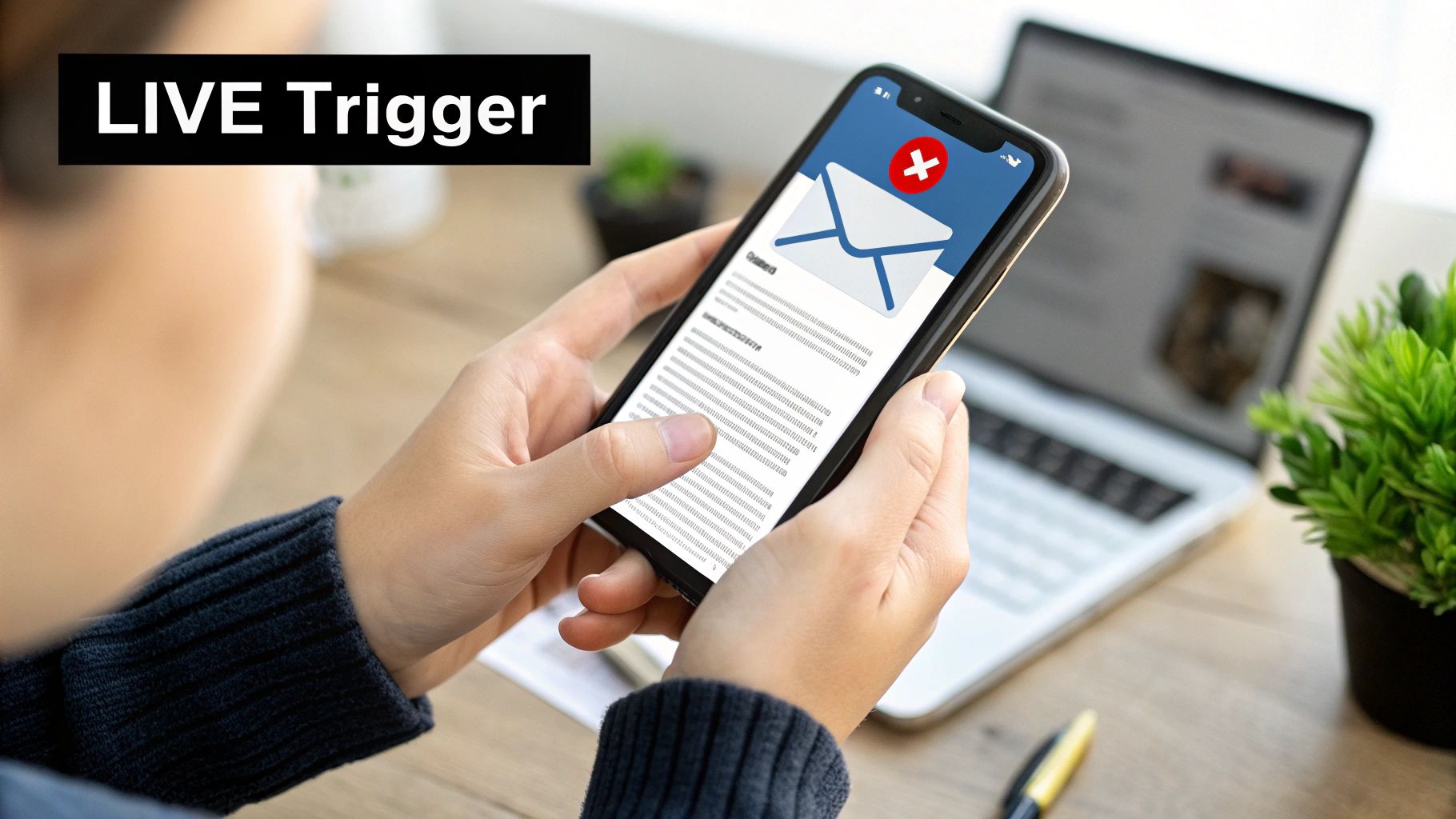
How to Implement Behavioral Trigger Campaigns
The core of this strategy is identifying high-intent actions within the customer journey and creating an immediate, relevant automated response. This requires mapping out key touchpoints where a timely email can nudge a user forward.
- Browsing Behavior: Trigger a follow-up email when a user views a specific product category multiple times. For example, if someone views three different running shoes, send them a guide on "How to Choose the Perfect Running Shoe."
- Feature Engagement: For SaaS businesses, send targeted tips when a user engages with a specific feature for the first time. Intercom excels at this by triggering onboarding messages based on which features users activate.
- High-Intent Actions: Automate an email from a sales rep when a lead visits the pricing or demo request page but doesn't convert. This can be as simple as, "Noticed you were checking out our plans, have any questions I can answer?"
- Content Consumption: If a subscriber downloads a whitepaper on a particular topic, trigger a short series of emails that offer related blog posts, case studies, or a webinar on the same subject to deepen their knowledge and your authority.
Pro Tip: In LeadSavvy Pro, you can set up behavioral triggers based on website page visits, link clicks in previous emails, or custom events. Set frequency caps to avoid overwhelming users and use strategic delays; an immediate response is great for a demo request, but a slight delay might feel more natural for a content follow-up. Combining these triggers with demographic data creates a hyper-personalized experience. You can explore more on this topic by reviewing our guide on marketing automation best practices.
6. Post-Purchase Follow-up Sequences
The sale isn't the end of the customer journey; it's the beginning of the relationship. A post-purchase follow-up sequence is an automated series of emails sent after a customer buys a product. This strategy moves beyond a simple order confirmation to enhance the customer experience, build brand loyalty, and strategically drive repeat business.
This is a critical email marketing automation strategy because it engages customers when they are most excited about your brand. By providing value after the transaction, you reduce buyer's remorse, decrease returns, and transform one-time purchasers into loyal advocates. Companies like Amazon and Zappos have set the standard for this, proving that post-purchase communication is key to long-term success.
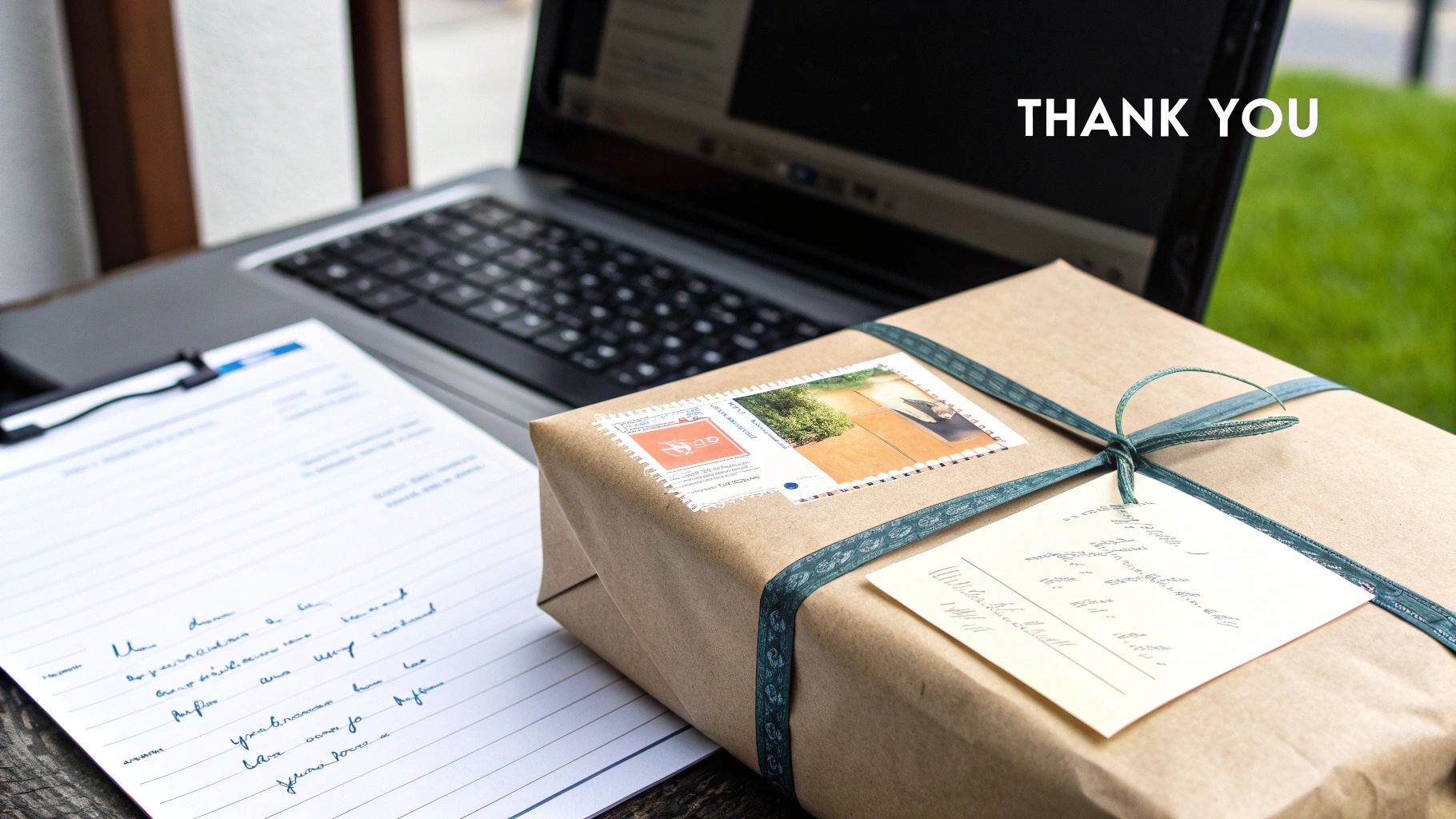
How to Implement a Post-Purchase Sequence
A well-crafted post-purchase flow nurtures the customer, reinforces their decision, and opens the door for future sales. It focuses on value before asking for more.
- Email 1 (Sent Immediately): Send the order confirmation and thank the customer. Provide a clear summary of their purchase and set expectations for shipping.
- Email 2 (Sent upon Shipment): Deliver shipping confirmation and tracking information. You can also include value-added content, like a quick-start guide or usage tips they can review before the product arrives.
- Email 3 (Sent 7-14 Days Post-Delivery): Request a review or feedback. This timing allows the customer to have fully experienced the product. Frame the request as a way to help other customers make informed decisions.
- Email 4 (Sent 21-30 Days Later): Introduce complementary products or offer a discount on their next purchase. For example, if they bought a coffee maker, suggest your brand of coffee beans. This is a perfect opportunity to cross-sell.
Pro Tip: Use LeadSavvy Pro to build post-purchase workflows triggered by e-commerce platform integrations. You can segment sequences based on the product purchased, customer's purchase history, or order value to deliver hyper-relevant content that drives significant lifetime value.
7. Lead Magnet Delivery and Indoctrination
When a prospect downloads your lead magnet, they are signaling a specific need and giving you a valuable opportunity to engage. A lead magnet delivery and indoctrination sequence is an automated workflow that not only delivers the promised resource but also begins a strategic relationship-building process. This goes far beyond just sending a download link; it's about establishing your authority and guiding them from initial interest toward becoming a loyal customer.
This is one of the most effective email marketing automation strategies because it meets subscribers at their highest point of intent. They just requested a specific solution from you, and this sequence leverages that momentum to provide more value, build trust, and seamlessly introduce them to your brand's ecosystem. It acts as the critical bridge between a curious lead and a qualified prospect.
How to Implement a Lead Magnet Indoctrination Series
A powerful indoctrination sequence confirms your value immediately and systematically moves the subscriber closer to your core offerings.
- Email 1 (Sent Immediately): Deliver the lead magnet instantly. Make the download link prominent and easy to find. Reiterate the primary benefit of the resource they just received.
- Email 2 (Sent 1-2 Days Later): Check in to ensure they accessed the resource. Highlight a key takeaway or a quick-win action from the content to encourage them to engage with it.
- Email 3-4 (Sent 3-5 Days Later): Provide supplementary value. This can be a related blog post, a short video tutorial, or a case study that expands on the topic of the original lead magnet.
- Email 5 (Sent 7-10 Days Later): Introduce the natural next step. This is where you can present a low-commitment paid offering, like a webinar or an introductory product, that solves the next logical problem for them.
Pro Tip: Use LeadSavvy Pro's automation rules to trigger this sequence the moment a user fills out your lead magnet form. You can create a dedicated email series that provides immense value related to the lead magnet's topic before transitioning them into your main newsletter or a longer-term nurture sequence.
8. Birthday and Anniversary Campaigns
Celebrating a customer's personal milestones is one of the most effective ways to build a genuine, emotional connection. Birthday and anniversary campaigns are automated emails sent on key dates, like a customer's birthday or the anniversary of their first purchase. This strategy transforms a standard marketing message into a personal gesture, making customers feel individually valued and appreciated.
This is a standout among email marketing automation strategies because it leverages personal data to create moments of delight. By acknowledging a date that is important to the customer, you reinforce their loyalty and demonstrate that you see them as more than just a transaction. These campaigns often achieve exceptionally high open and conversion rates due to their timely, personal, and celebratory nature.
How to Implement Milestone Campaigns
A successful milestone campaign feels like a genuine gift, not just another promotion. It should be celebratory, generous, and easy for the customer to redeem.
- Collect the Data: Add an optional "Birthday" field to your sign-up or account creation forms. Incentivize sharing this information by mentioning a "special birthday surprise."
- Plan Ahead: Schedule the email to be sent 3-7 days before the actual birthday or anniversary. This gives the customer ample time to see the offer and plan to use it.
- Create a Compelling Offer: A significant discount, a free product, or bonus loyalty points work well. For example, Sephora's Beauty Insider program offers a free gift, while Starbucks gives rewards members a free drink.
- Extend the Redemption Window: Make the offer valid for the entire birthday week or month, not just a single day. This flexibility increases the likelihood of redemption and reduces pressure on the customer.
- Personalize Beyond the Name: Reference their journey with your brand. For an anniversary email, you could say, "It's been one year since you joined us!" or mention their first purchase.
Pro Tip: Use LeadSavvy Pro to create a date-based automation. Set up a trigger that fires annually on a contact's "birthday" property. You can even segment your offers, sending a premium gift to VIP customers while offering a standard discount to others, ensuring every celebration feels perfectly tailored.
9. Educational Email Courses (Email Sequencing)
Transform your email list into a classroom by offering a free, automated educational email course. This is a structured series of emails designed to teach subscribers a specific skill or provide in-depth knowledge on a topic over a set period. Unlike a general drip campaign, an email course is a cohesive program with a clear beginning, middle, and end, where each lesson builds upon the last.
This is one of the most effective email marketing automation strategies for establishing authority and building deep trust. By providing immense value upfront with a structured learning experience, you create a highly engaged audience segment that sees you as a go-to expert. This positions your paid products or services as the natural next step in their educational journey.
How to Implement an Educational Email Course
A successful email course delivers tangible wins and keeps subscribers anticipating the next lesson. It’s a powerful lead magnet and a potent nurturing tool combined.
- Lesson 1 (Sent Immediately): Welcome the student and deliver a "quick win." This first lesson should be simple, actionable, and provide immediate value to build momentum and excitement for the rest of the course.
- Lessons 2-4 (Sent Every 1-2 Days): Dive into the core content, breaking down complex topics into digestible pieces. Number each lesson clearly (e.g., "Lesson 2 of 7: Subject Line Secrets") to set expectations. Include a small action item or "homework" in each email to boost engagement.
- Final Lesson (e.g., Day 7): Provide a summary or recap of the entire course. This is the perfect opportunity to introduce a relevant paid offering as the "graduation" or next logical step for those who want to continue learning.
- Follow-up (2-3 Days Later): Send a final email asking for feedback or a testimonial. You can also send a "certificate of completion" to create a memorable end to the experience.
Pro Tip: In LeadSavvy Pro, create a new automation triggered by a form submission for your course. Use time delays to space out each lesson consistently, creating a predictable schedule for your subscribers. You can then segment everyone who completes the course into a "highly engaged" list for future, more targeted promotions.
9 Key Email Marketing Automation Strategies Compared
| Automation Type | Implementation Complexity 🔄 | Resource Requirements 💡 | Expected Outcomes ⭐📊 | Ideal Use Cases 💡 | Key Advantages ⚡📊 |
|---|---|---|---|---|---|
| Welcome Email Series Automation | Medium – upfront planning and updates | Content creation for 3-7 emails, segmentation, testing | High open rates (50-86%), increased LTV, trust build | Onboarding new subscribers/customers | Highest open rates, educates and converts early |
| Abandoned Cart Recovery Automation | Medium-High – requires e-commerce integration | Product data integration, multi-email urgency sequence | Recovers 10-30% carts, 18-30% conversion rates | E-commerce shoppers abandoning carts | High ROI, dynamic product reminders, urgency tactics |
| Lead Nurturing Drip Campaigns | High – complex segmentation and triggers | Large content library, lead scoring integration | 451% increase in qualified leads, shorter sales cycles | Long-term prospect nurturing | Builds authority, scales nurture, identifies hot leads |
| Re-engagement (Win-back) Campaigns | Medium – timeline and incentive planning | Incentive offers, survey and preference options | Reactivates 5-15% dormant users, list hygiene improved | Inactive subscribers and lapsed customers | Cost-effective reactivation, feedback gathering |
| Behavioral Trigger Campaigns | High – real-time tracking and personalization | Advanced tracking, analytics, multiple triggers | 3x higher conversions, 624% higher than bulk emails | Highly personalized, action-based communications | Timely, relevant messaging, captures high intent |
| Post-Purchase Follow-up Sequences | Medium – product-specific content timing | Product guides, review requests, cross-sell content | Increases CLV 25-95%, reduces returns, repeat buys | Post-purchase customer engagement | Builds loyalty, reduces returns, drives repeat sales |
| Lead Magnet Delivery and Indoctrination | Medium – topic-specific sequences | Lead magnet content, follow-ups, segmentation | 2-3x higher conversion than blog subscribers | Delivery of lead magnets and early relationship building | Immediate value, authority building, warm leads |
| Birthday and Anniversary Campaigns | Low – date-triggered and simple content | Customer data (birthdays), personalized offers | 30-50% redemption rate, 481% higher transactions | Customer milestone celebrations | High engagement, emotional connection, easy setup |
| Educational Email Courses (Email Sequencing) | High – structured curriculum and pacing | Extensive course content, action items, community | 30-50% completion rate, 3-5x higher purchase likelihood | Skill building, brand authority establishment | High engagement, perceived value, lead generation |
From Strategy to Action: Your Automation Blueprint
We've journeyed through a comprehensive landscape of powerful email marketing automation strategies, moving from the foundational welcome series to the nuanced behavioral trigger campaigns. Each strategy we've explored represents a distinct opportunity to build a stronger, more profitable relationship with your audience. The common thread weaving them all together is a shift from manual, one-off sends to a sophisticated, systemized approach that delivers the right message to the right person at the precise moment they need it.
The power of automation isn't just about saving time, though that is a significant benefit. It's about creating a personalized, scalable customer journey that feels authentic and attentive. By implementing even a few of these automated workflows, you transform your email list from a passive audience into an engaged community, guiding them seamlessly from initial interest to loyal advocacy.
Your Key Takeaways and Next Steps
As you move forward, the goal is to translate this knowledge into tangible results. Don't feel pressured to implement all nine strategies at once. Instead, identify the areas of greatest opportunity for your specific business and build from there.
- Start with the Foundation: If you're new to automation, the Welcome Email Series and Lead Magnet Delivery are your non-negotiable starting points. They set the tone for your brand and fulfill the initial promise made to your new subscribers, building crucial early trust.
- Capture Low-Hanging Fruit: For e-commerce businesses, the Abandoned Cart Recovery sequence is an immediate revenue generator. It addresses a high-intent audience with a direct solution, making it one of the most profitable email marketing automation strategies you can launch.
- Build for the Long-Term: Once foundational automations are running, focus on nurturing relationships. Lead Nurturing Drip Campaigns and Post-Purchase Follow-ups are essential for guiding prospects through the sales funnel and turning one-time buyers into repeat customers.
- Refine with Data: The most advanced strategies, like Behavioral Triggers and Re-engagement Campaigns, rely on understanding your customer data. As you gather more insights on user actions (or inactions), you can deploy these highly-targeted campaigns to maximize engagement and prevent list decay.
The true value of these strategies emerges when they work in concert. A customer might enter your ecosystem through a lead magnet, be nurtured through a drip campaign, make a purchase, receive a post-purchase follow-up, and then get a special offer on their birthday-all without you ever lifting a finger after the initial setup. This interconnected web of communication is the hallmark of a mature automation engine.
Of course, a brilliant strategy is only as effective as the platform you use to execute it. As you transition from strategy to practical implementation, choosing the right platform is critical; consider exploring the best email marketing automation tools to power your efforts. Finding a tool that aligns with your technical comfort level and business goals is paramount to your success.
Ultimately, mastering these email marketing automation strategies is about more than just sending emails. It's about engineering a superior customer experience that fosters loyalty, drives conversions, and builds a resilient, thriving business.
Ready to turn these powerful strategies into reality with a tool designed for simplicity and results? LeadSavvy Pro provides the intuitive workflows and robust features you need to build and launch every automation discussed in this guide. Start your journey toward smarter, more effective marketing today by exploring LeadSavvy Pro.

